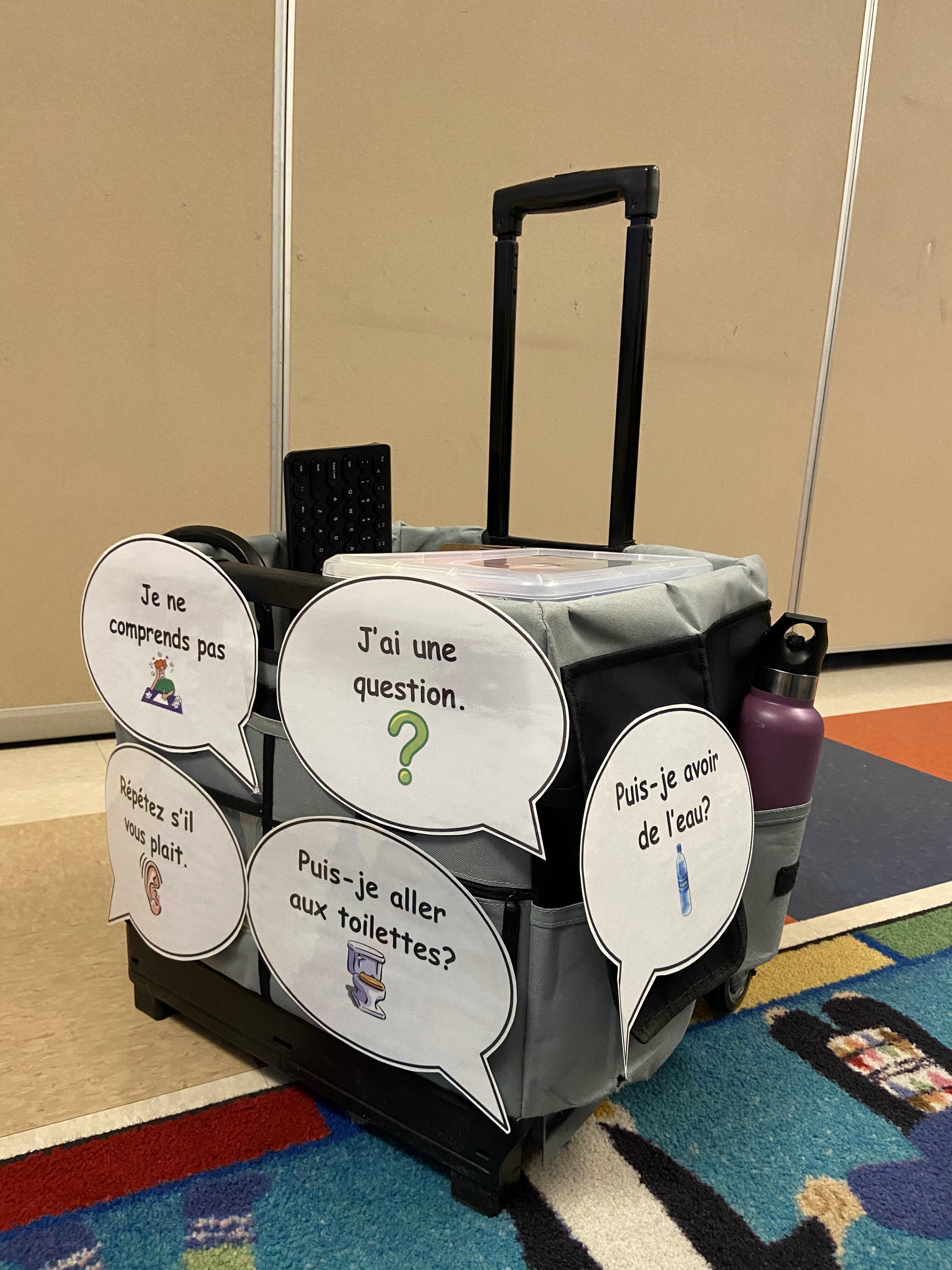No classroom? No problem: how I made my displays mobile

I have been very fortunate in recent times to have a dedicated classroom to teach French to key stage 2.
Over the past three years, my wall displays have multiplied and become window displays, which brightly and cheerily obscure the view of the concrete parking lot opposite.
I have everything from numbers and colours to “fancy flourishes” that my children can use to up-level their writing and speaking.
Sadly, my classroom is now just the biggest office in the school, as I nomadically wheel my cart of resources from class to class so that our children can stay in their “bubble groups”.
This initially presented a real challenge. How could I possibly replicate hundreds of square feet of language resources in just one small cart?
The importance of classroom displays
One thing that I am very glad I did in March, as we prepared for the possibility of closure, was photograph all my displays.
While teaching virtually, I uploaded the photographs to my “virtual classroom”: a shared folder that my children could access and use to find the word they needed.
Nine months later and those photographs still serve as a resource for pupils who are learning from home.
Furthermore, my Year 5 and 6 classes who have access to a device in school can also use the virtual classroom.
Collapsible displays
Of course, though, nothing beats a real display - they encourage learning, inspire questions, catch the eye and generally add to the feeling of learning.
So not having these from our teaching time was set to be a big loss. However, I have found a way to make them mobile that only requires some light DIY and a bit of ingenuity.
With a hole punch and some treasury-tags, I joined the parts of some displays together so that they could be easily folded and unfolded where I was in the school.
I then stored the works in plastic pockets to keep them from getting damaged and now can just pull and pin them up in a convenient spot in whichever classroom I am.
I also tried this with tape but found it couldn’t take the frequent folding and unfolding, so drawing pins are the way forward.
This means when I need a display for a specific purpose - teaching time phrases, for example - I can whip out of my cart and pin to the wall in seconds. Voila!
‘Oh yeah? Really?’
I think this really matters because, as mentioned, displays can really offer something extra to pupils.
One of my funniest memories is the day a particularly sparky Year 3 turned around, looked me in the eye and said: “Ah bon? Vraiment?” (“Oh yeah? Really?”)
Had I taught him that? No. Had he previously read it from a poster on the wall and then used it in context? Brilliant.
Now, on the road, I take one rejoinder around with me for the week, and the pupils’ challenge, while I set up, is to come up with as many examples as they can - in English - in which they can respond with that rejoinder.
For example, this week’s rejoinder was “c’est évident!” (obviously!) so the student had to quickly think of scenarios in which they could use that as a response. “Mr Tuckley is fun! C’est évident!” “It’s snowing! C’est évident!” and, of course, bonus points go to responses in full French, “Le français est super. C’est évident!”
Makes displays wherever you can

Also, for those of us wheeling our classrooms resources around, why not use the cart as a mobile display? My cart is approximately 2ft cubed - I’ve been away from Scotland too long to know what that is in metric - that’s a lot of space on which to stick images of common daily vocabulary that you want pupils to use.
With some adhesive Velcro tabs, I was able to affix laminated speech bubbles with classroom staples such as, “Repeat please”, “May I drink water?” and the ubiquitous, “May I go to the bathroom, please?”
Sure, I’m walking around school with a picture of the loo on my cart but, until the biggest office in the school is filled with the hum of children learning once again, that’s a sacrifice I’m willing to make.
Tim Tuckley is a primary languages specialist at British International School of Chicago, Lincoln Park
You need a Tes subscription to read this article
Subscribe now to read this article and get other subscriber-only content:
- Unlimited access to all Tes magazine content
- Exclusive subscriber-only stories
- Award-winning email newsletters
Already a subscriber? Log in
You need a subscription to read this article
Subscribe now to read this article and get other subscriber-only content, including:
- Unlimited access to all Tes magazine content
- Exclusive subscriber-only stories
- Award-winning email newsletters